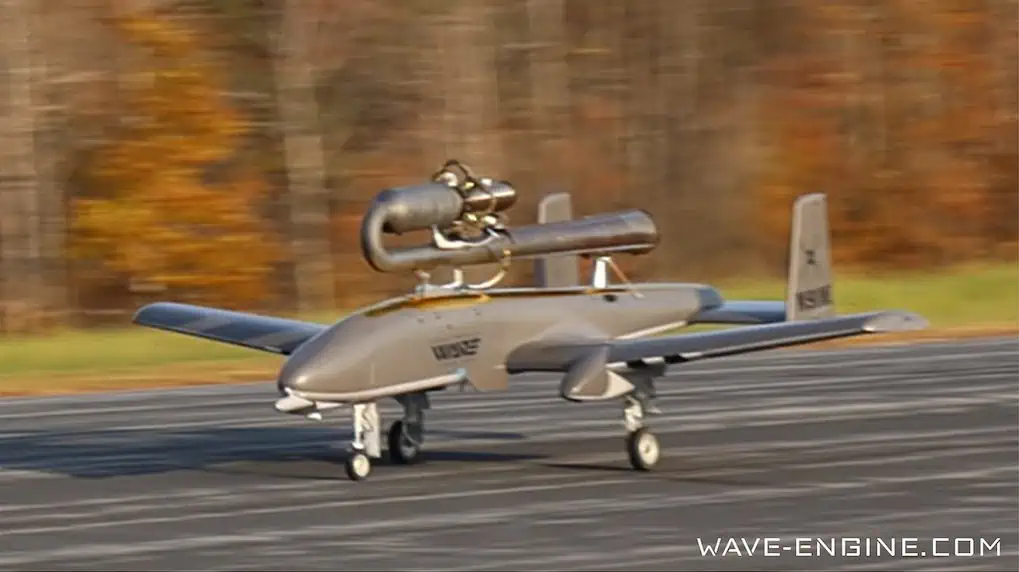
The North American Wave Engine Corporation has demonstrated complete flight capability on a UAV using a jet engine that requires no moving parts.
A demonstration flight included self-powered take-off, climb-cruise and landing. The propulsion system is generally the most expensive and complex component of a jet powered aircraft, and this technological development signals major improvements for the cost and rapid-producibility of future jet powered aircraft.
Wave engines are a class of aircraft engines that operate using pressure waves instead of rotating machinery. Intermittent combustion inside a hollow tube produces pressure waves that push hot gases and produce thrust.
Wave Engine Corp.’s proprietary technology enables high speeds and allows for an order-of-magnitude reduction in the cost and complexity of jet propulsion, which is a critical enabler for an increasing number of applications that call for affordable and rapidly-producible jet propulsion systems and aircraft.
For the demonstration flight, a 50+ lbf (222+ N) thrust wave engine was used as the sole powerplant on a 100 lbs (45 kg) gross weight Conventional Take-Off and Landing UAV. Remote instant start on liquid fuel was also demonstrated as part of the flight sequence.
The company has developed engines ranging from 50 lbf (222 N) to 250 lbf (1112 N) maximum thrust suitable for aircraft ranging from 100 lbs (45 kg) to 1000 lbs (450 kg) gross weight, and demonstrated operation on gasoline/petrol (87 Octane), kerosene-based fuel (Jet-A/JP-8) and sustainable ethanol-based biofuel (E85).
The company also announced that it had successfully demonstrated multiple mid-air starts and operated its engines at airspeeds up to 200 mph, limited only by the practical limits of the test facility.
Additionally, the company has demonstrated Thrust Specific Fuel Consumption (TSFC) levels under 2.0 lbs/lbf-hr to rival the efficiency of turbine-based engines, and performance continues to improve as development progresses.
Lastly, the company also announced its launch product, the 50+ lbf thrust J-1 engine, and welcomed potential partners for inquiries and demonstrations.
Daanish Maqbool, CEO of Wave Engine Corporation, said; “We continue to push the performance and flight envelope. We have worked for years to harness the power of sound and fire, and we believe it is going to change the industry.”

















